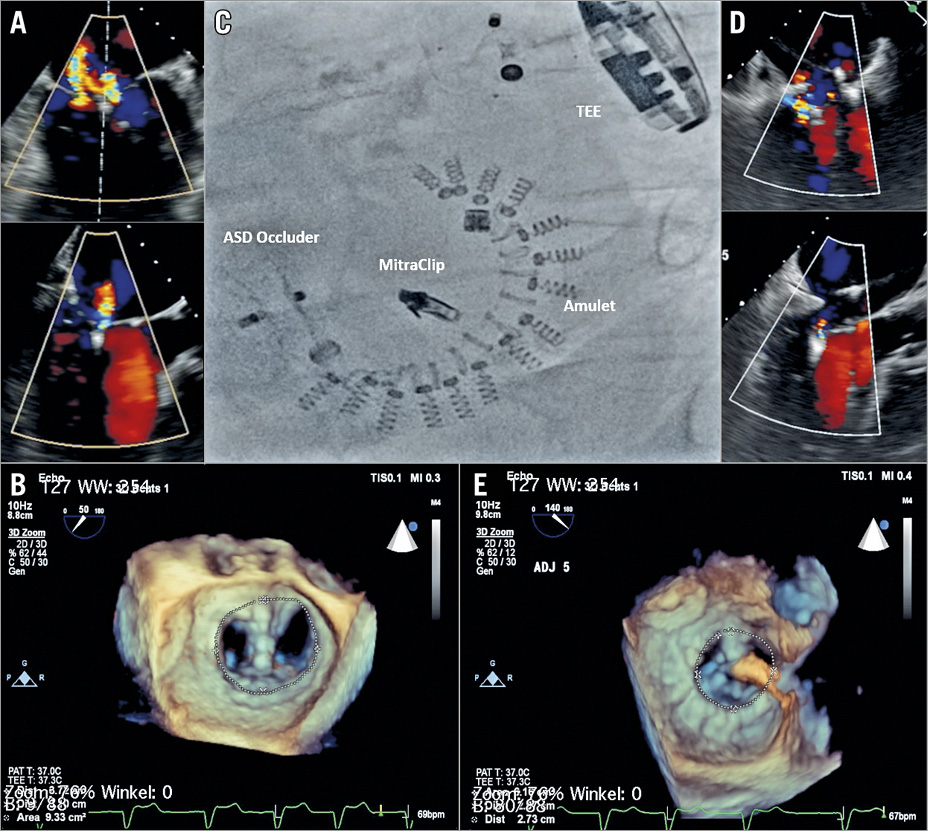

Mitral regurgitation (MR) recurrence after MitraClip® (Abbott Vascular, Santa Clara, CA, USA) implantation has been associated with increased mortality and heart failure. With percutaneous mitral annuloplasty, the combination of leaflet and annular repair may represent the optimal treatment in patients with persistent MR after MitraClip implantation. This report shows that combining MitraClip with Cardioband (Edwards Lifesciences Inc., Irvine, CA, USA) implantation is feasible, safe and could be beneficial for stable long-term outcomes.
An 83-year-old patient presented with severe functional MR (FMR) and retraction of the posterior leaflet in the central part of the valve (P2 region) as well as annular dilatation. A single MitraClip was implanted between the A2 and P2 segments, leading to an instant decrease in MR. However, eight-month follow-up showed a recurrence of severe residual mitral insufficiency with a large medial and lateral jet and dilated left atrium (Panel A, Panel B). Considering that the reason for MR recurrence was annular dilatation, a Cardioband device was implanted on the atrial side of the mitral annulus. Post-interventional echocardiography as well as 3D imaging showed both MitraClip and Cardioband in the correct position, with significant septolateral annular dimension reduction (Panel C-Panel E). No mitral stenosis was observed and the patient was able to be discharged in an improved clinical condition (Moving image 1).
MitraClip implantation has been the treatment of choice for almost 30,000 patients since its clinical introduction1. However, about 20% of patients have significant recurrent MR2. Annular dilatation is most likely the culprit for MR recurrence. Although the final results of the EVEREST II randomised controlled trial (RCT) showed that mitral annular dimensions do not increase at midterm follow-up after MitraClip implantation, surgical experience has shown that recurrence of MR after valve repair is higher in the absence of concomitant annuloplasty3. The Cardioband system has been in use since 2014 with early data promising feasibility and safety4. The combination of MitraClip and Cardioband represents an equivalent to open surgery leaflet repair and annuloplasty, and should be performed in cases of recurrence. In selected cases such as when there is a high risk of recurrence, we believe that a combined interventional procedure should be considered from the start.
Conflict of interest statement
F. Maisano is a consultant for Abbott Vascular/Valtech Cardio. M. Taramasso is a consultant for Abbott Vascular and 4Tech. The other authors have no conflicts of interest to declare.
Supplementary data
Moving image 1. Reduction of mitral regurgitation with a combination of MitraClip and Cardioband.
Supplementary data
To read the full content of this article, please download the PDF.
Moving image 1. Reduction of mitral regurgitation with a combination of MitraClip and Cardioband.

